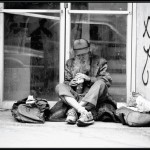As the homeless situation continues to intensify in Los Angeles and Orange County, tension has been mounting in Bakersfield over homelessness. Just last month, Kern County Supervisors were confronted by a group of women who wanted to know why they were seeing more homeless people and if homeless people were purportedly being transported to Bakersfield.
This system is going to play an integral role in reducing and ultimately ending homelessness in our community. It’s going to allow us to provide services in a more expedited way, it’s going to allow us to target those resources for the most vulnerable in our community, and it’s going to give us good real-time data to start analyzing gaps so we’re not going depend on data we receive once a year in January.
Kimmel says this database will be a community effort, and the Homeless Collaborative is currently holding presentations to better educate organizations on the new system. She added:
We’re actually giving many presentations right now as the Homeless Collaborative to members of the community…business owners, faith-based organizations…about how they can come to the table and help us in this effort. Homelessness is a community issue. It’s not an agency issue. It’s not a government issue. It’s a community issue. And if we’re really going to move the needle and impact Kern County, it’s going to take everybody to do that.
Kimmel does not anticipate any negative feedback on the program. She believes most people won’t notice what she says will be a difference in our streets. She believes outreach workers are trained well enough to execute the questions and does not anticipate additional reticence from the homeless community.
Matthew Billington of Flood Ministries is currently using the survey when he performs outreach work to find out who is vulnerable and connect them to the right resource. He says it’s been a bit overwhelming since the program is in its infancy stages. Kimmel says:
We ask questions that help us identify the vulnerability based on their mental health status, substance abuse status, physical health status. Basically, what we learn from the survey is who is the most mentally ill, who is the most medically vulnerable, who has the highest need for supportive service and wrap-around services in housing intervention.
© Humane Exposures / Susan Madden Lankford










